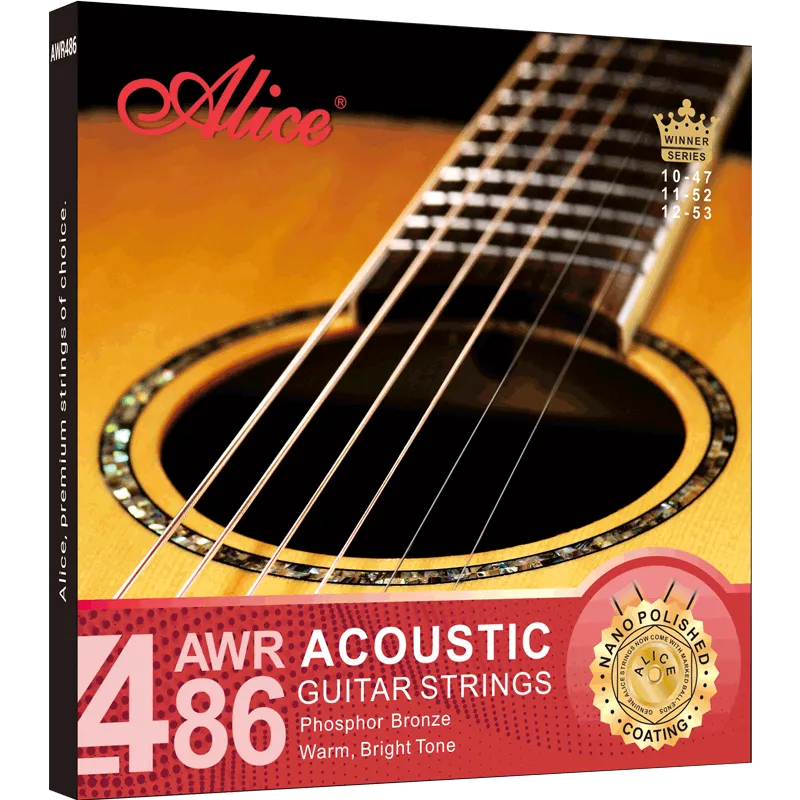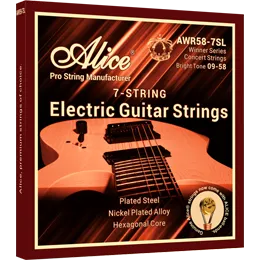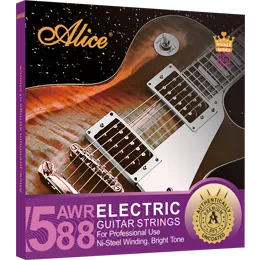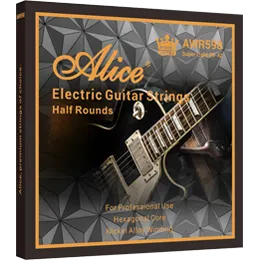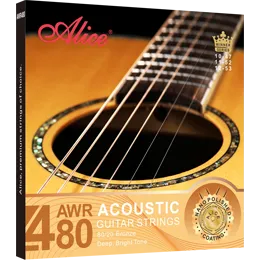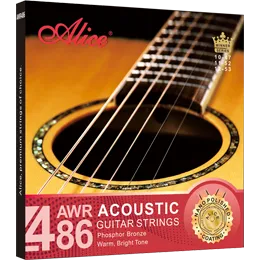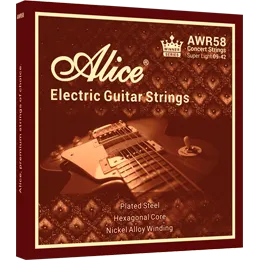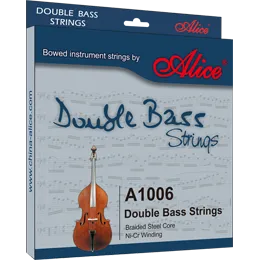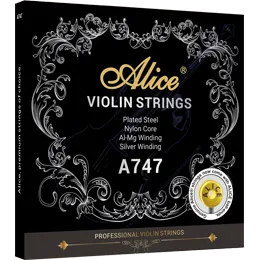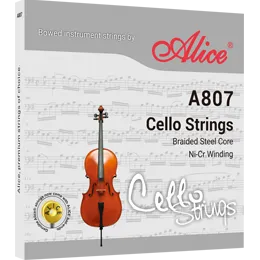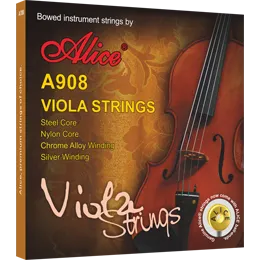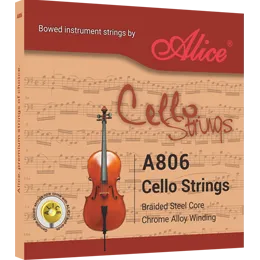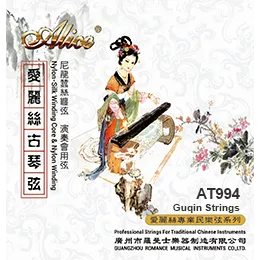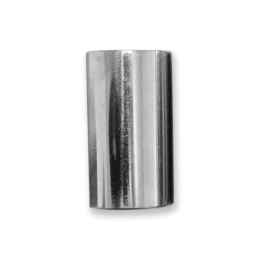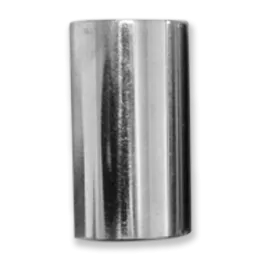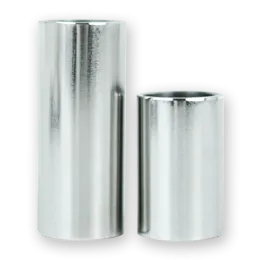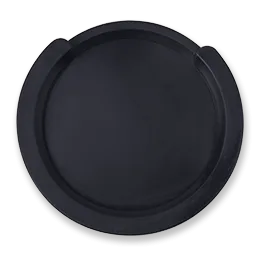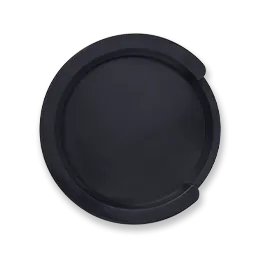Alice Violin String Guide: All About Violin Strings Order, How-To, and More

Some beginner violinists may be wondering where to start when it comes to learning the violin. It can seem daunting, but anyone can become a great violinist with the right tools and resources. There are many different learning methods for playing the violin, each tailored to varying levels of experience and playing styles.
Let's learn basic techniques like violin holding, string order, and how to string Alice violin strings.
How to Hold a Violin After Getting One?
When starting, learning how to keep the violin is essential. There are two main ways of holding a violin: classical and fiddle styles. Each has advantages and disadvantages, so getting comfortable with both methods is essential to choose which works best for your playing style.
The violin should be more vertical in the classical style, with your left hand between the chin and shoulder. The left arm should be close to the body with your elbow slightly bent. Your right hand should hold up the violin neck at a 45-degree angle so that you can access all four strings easily.
For the fiddle style, you will hold the violin horizontally. Your left hand should be like a claw with your fingers curled around the neck of the violin. The right hand should lean on or just above the bridge and rest in an arch position with your thumb behind it and other fingers spread out.
Ensure your chin and shoulder are comfortable with the instrument in both styles.
What Is the Violin Strings' Order?
When learning the violin, it’s essential to understand the violin strings' order. The four columns on a violin are tuned from lowest to highest: G, D, A and E. It’s helpful to remember this order as you learn different techniques and pieces of music for the violin.
The G String: The G string is typically the thickest and will require more pressure or weight from your bow arm to produce a good, rich sound.
Strings D and A: The D string has a thinner gauge. The D and A-lines are very similar and require a comfortable, natural amount of arm weight to sing beautifully.
The E String: The E string is the most delicate and thin. If you apply too much stress to your arm, it will produce an unpleasant, creaky sound. The E string should be bowed lightly with only the weight of your arm and turned to get a lovely tone.

How to Choose Violin Strings?
When learning to play the violin, choosing strings that are right for your level of playing and playing style is essential.
There are different types of strings available. Some lines are for classical playing, while others are designed for fiddle or jazz. Choosing the right strings to get the most out of your violin and ensure you sound good.
Materials: Various materials are used in violin strings, like Gut, nylon core, and steel core strings. Nylon core violin strings are usually best for classical playing as they are very responsive, producing a warm sound and good intonation. Gut strings need much maintenance. Steel core strings provide a brighter sound with better projection.
Tension: The strings' tension also affects your instrument's sound and playability. Low-tension strings will produce a softer tone, while high-tension strings offer more power and projection. Finding the right balance between these two is essential when choosing strings for your violin.
Using scenarios: When choosing strings, consider what you will be using them for - solo playing, show, or training - as this can influence the type of strings you choose. With some experimentation, finding the perfect set of strings to suit your needs is possible.
Brand: Lastly, it is essential to consider the brand of strings. Different brands have different qualities, and even within a single brand, multiple types of string sets are often available. Do some research and find out which strings fit your style best. Considering all the above factors, you can find the perfect strings for your violin, like Alice violin strings.
How to String a Violin?
Now that you have chosen the right strings for your violin, it’s time to learn how to string it. To do this, start by loosening the pegs and removing the old strings. Then put on a new Alice violin string one at a time and ensure it is secured by tightening the peg. Finally, tune each string according to your desired pitch and ensure it is adjusted firmly but not too tightly. This process can take time, so take your time and practice until you feel comfortable with it. When done correctly, your violin will sound beautiful!
If you are looking for an excellent set of strings for your violin, we recommend one of Alice violin strings.
Alice Violin String A747 For Solo Violinists
This Alice violin string set has a clear, brilliant tone, excellent responsiveness, well-balanced tension, and a comfortable feel. It's an excellent choice for soloists. With plated steel plain strings and nylon cores, the A747 violin string set has been engineered to produce the best sound quality possible. The Al-Mg and silver winding is also specially designed to provide superior resonance and sustain.
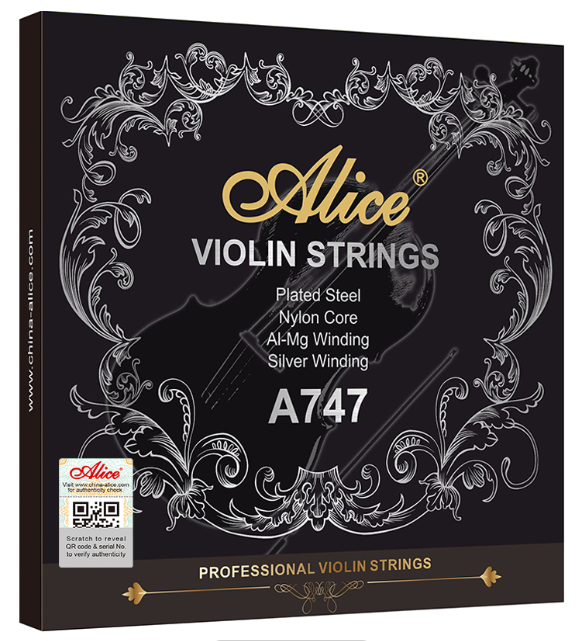
Features:
● Plated steel plain string, nylon core, Al-Mg winding, silver winding
● 4/4 violins suitable (more sizes available upon order)
● Clear and brilliant tone
● Excellent responsiveness
● Well-balanced tension for a comfortable feel
● Superior resonance and sustain.

About Alice
Alice is a professional string manufacturer that has been making strings since 1999. We are dedicated to providing the highest-quality strings and accessories for your instrument. Our products undergo rigorous testing, ensuring we meet our high-quality standards.
We offer a variety of string sets, including solo strings in different tensions, materials, and sizes, so that you can find the perfect set of strings for your instrument. Alice stands out from the competition because we use only the finest materials for its strings. These strings are designed to last longer and produce a distinctive tone. So, don’t hesitate to give Alice violin strings a try!
Relate News


How to Choose the Right Guitar Strings for Your Guitar
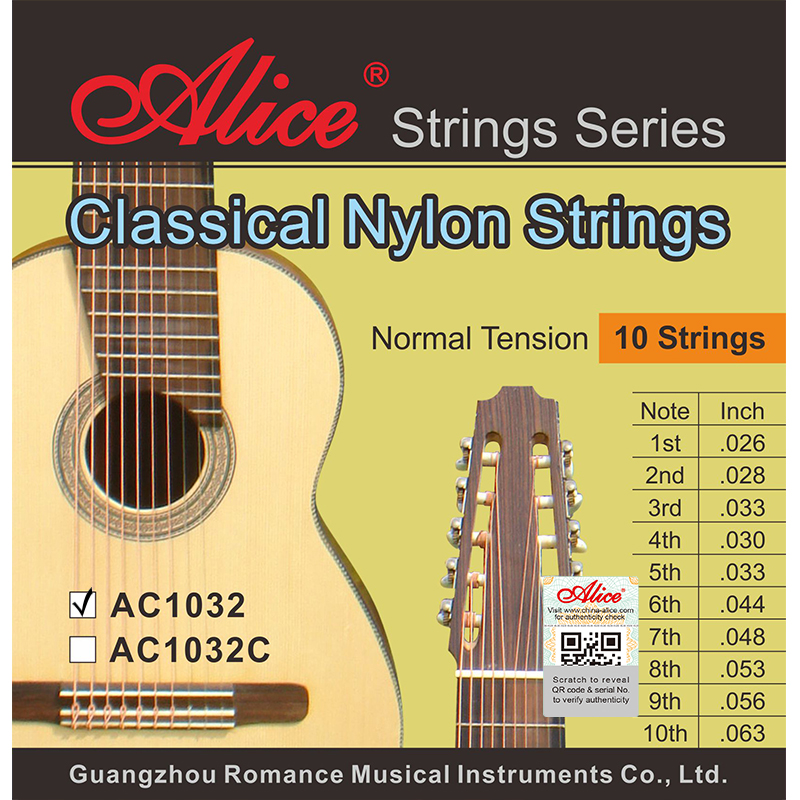
Nylon Strings for Classical Guitars: Everything You Need to Know
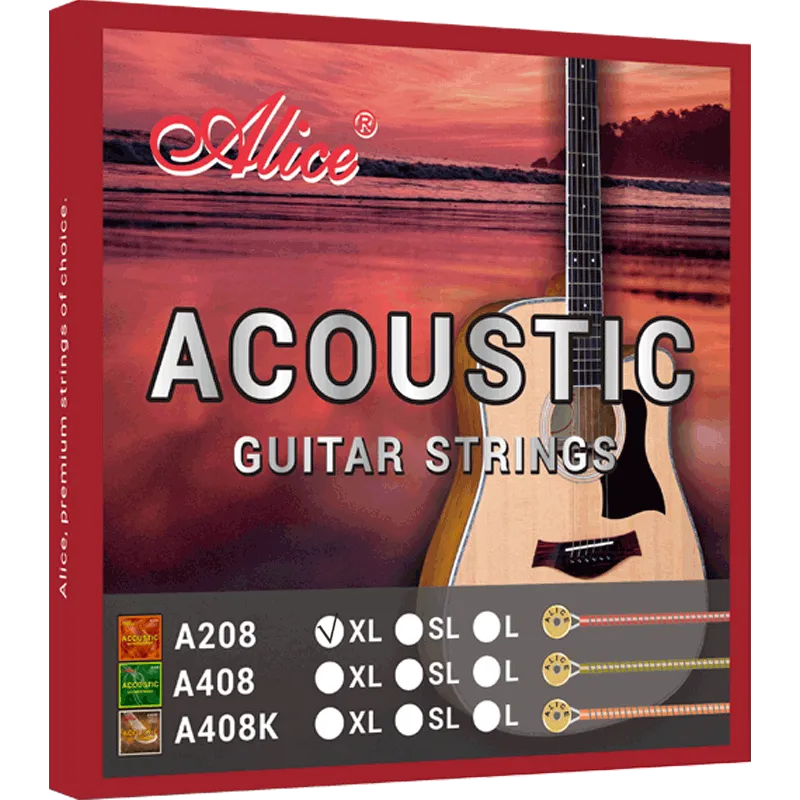
5 Key Indicators to Identify High-Quality Acoustic Guitar Strings
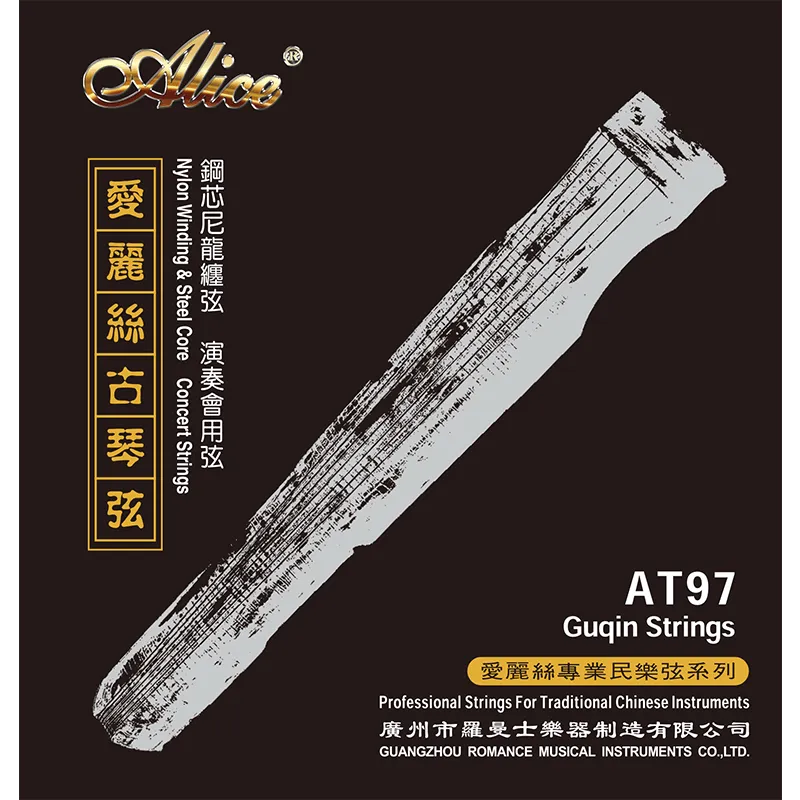
What Are Guqin Strings Made Of?
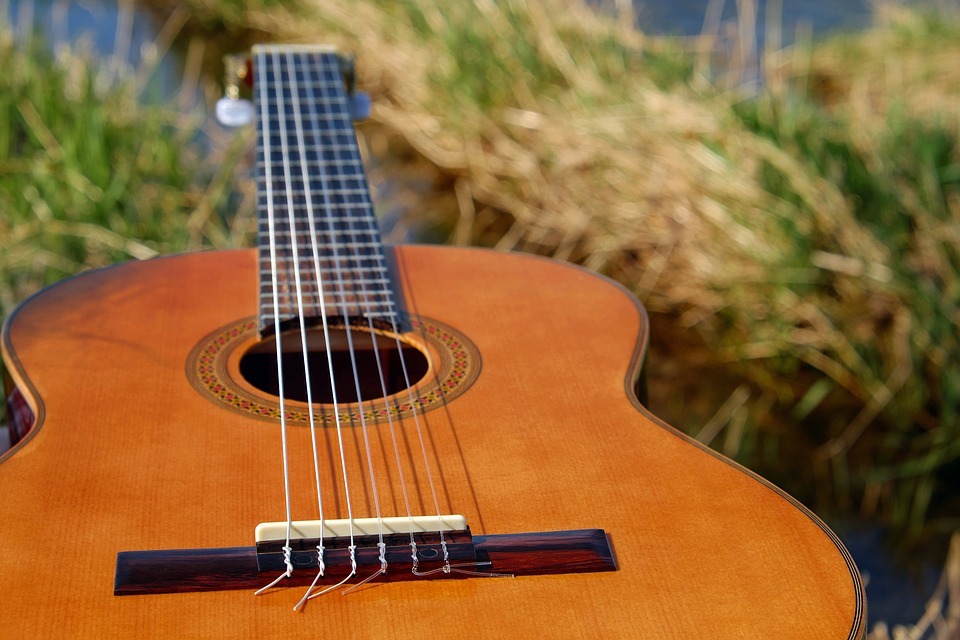
Silk Strings, Steel Strings, and Nylon Strings: Which Is Best for Your Traditional Music Performance?
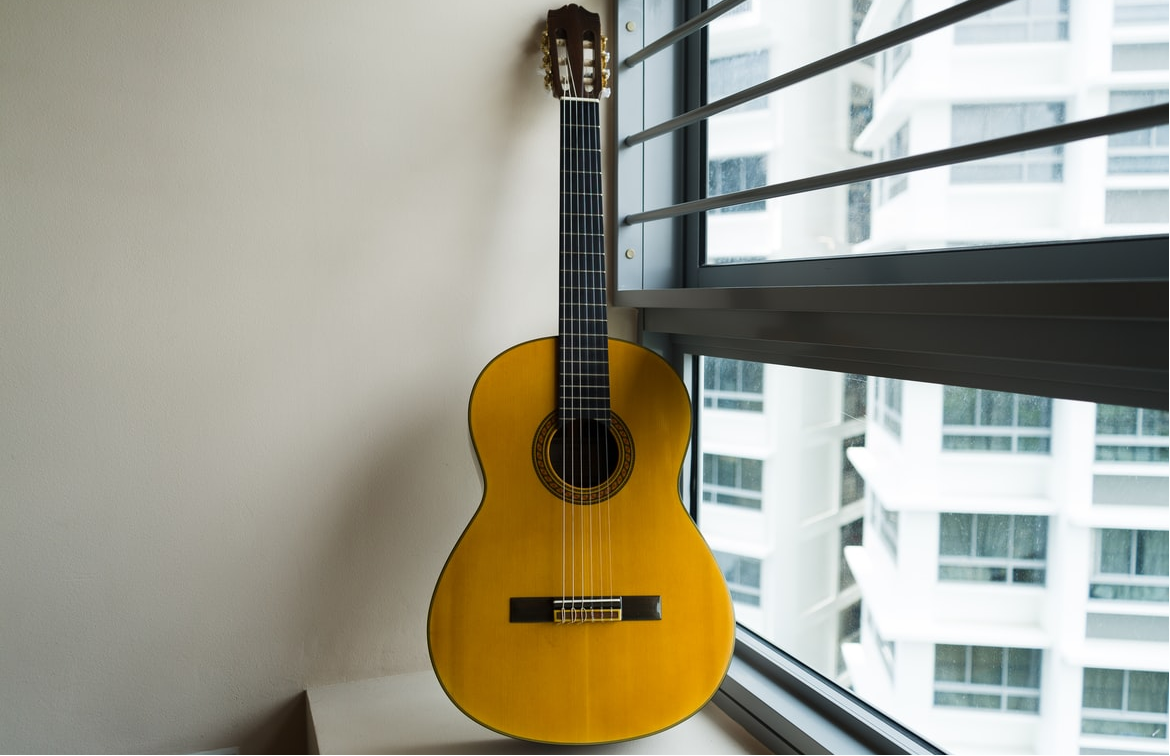
Complete Guide to Guitar String Materials

Orchestral Strings Explained: A Beginner-Friendly Guide to Violin, Viola, Cello, and Double Bass

Tone Comparison of Brass Alloy, Phosphor Bronze, and Coated Guitar Strings

How to Choose the Right Guitar Strings for Your Performance: A Scenario-Based Buying Guide

OEM Guitar String Customization: A Detailed Guide to the Process
